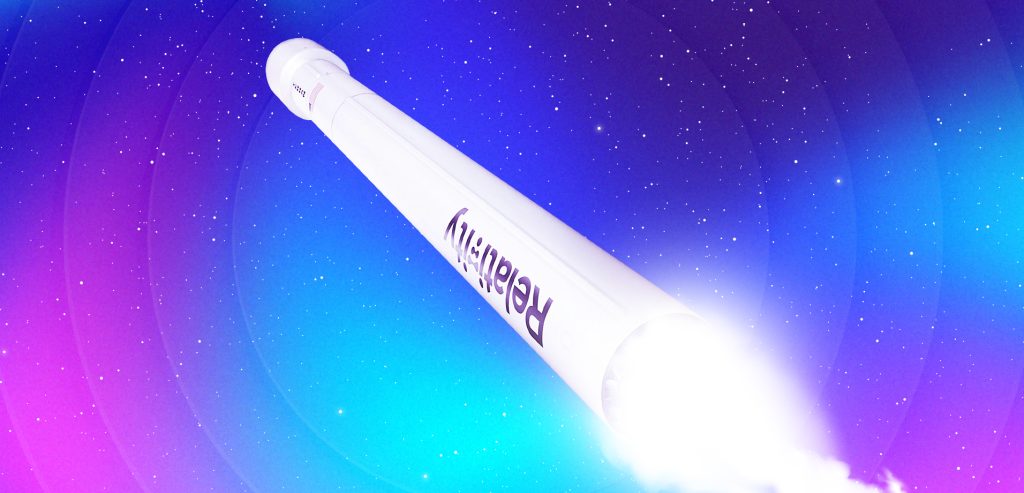Methane Rockets: Look Who’s Leading The Methane Space Race
14th Aug 2023
The merits of methane-based fuels have long been the subject of speculation in the space industry. Developments have seen many companies working on propulsion systems using methane and oxygen. Methane is known to be a highly efficient and effective natural gas, far more so than any other hydrocarbon option or any other type of rocket fuel.
In the industry, there has been a huge push to be the first to send a methane fuel rocket into space using cryogenic liquid methane and liquid oxygen (“methalox”). Methane-based fuels are similar in density to kerosene (an industry staple for some time now) but it also offers an efficiency that is more in line with hydrogen-based engines.
LandSpace Wins the Methalox Space Race

In July 2023, Chinese startup LandSpace won the race to be the first company to put a craft into orbit using a methane-based fuel rocket. Their Zhuque-2 rocket was launched from Jiuquan Satellite Launch Center in the Gobi Desert on Tuesday, July 11, 2023. This was the second test of the Zhuque-2, in December 2022 the first test craft failed to reach orbit after the second stage vernier engines shut down prematurely.
The two-stage methane fuel rocket has a slightly more simple combustion cycle compared to some of the other methane-based rockets that are currently in development. Four TQ-12 engines are used in the first stage consuming both liquid oxygen and methane to generate almost 600,000 lbs of thrust. In the upper stage, there is a single TQ-12 along with a vernier engine with lower thrust. The TQ-12 uses a gas generator cycle in its design, which arguably means less to go wrong when compared to other Methalox engines.
This simpler engine takes nothing away from the incredible achievements and the impact that this will have on the Chinese private space industry. LandSpace is already assembling the next Zhuque-2 and has even indicated that another launch could be achieved before the end of the year.
Landspace CEO Zhang Changwu spoke to the Global Times tabloid and said the company would now look to start mass-producing the rocket, knowing that the design is viable.
SpaceX Starship

Until the successful launch of the LandSpace craft, the highest-profile craft using methane fuel was the SpaceX Starship rocket, currently still in development.
The rocket uses 33 methane-fueled Raptor engines, and aims to one day be able to bring payloads all the way to Mars and use the Sabatier reaction for a return journey. The craft will be impressive and is even designed to fly multiple times without having to be rebuilt in between.
The Sabatier reaction, developed by the French chemist Paul Sabatier, is key to the use of methalox fuels for trips to Mars. This chemical reaction is already used on the ISS successfully.
As explained by Chris Hadfield’s Masterclass on Space Travel:
“The Sabatier methanation reaction can theoretically be tweaked to produce methane from the raw materials in the Martian atmosphere. Tests have shown that using a reverse water gas shift reaction to reduce carbon dioxide to carbon monoxide, the Sabatier methanation process can be used for methane rocket propellant production at nearly 100% conversion rate.”
It sounds like the stuff of science fiction, but it is possible that there could effectively be a refuelling station on Mars.
In April, SpaceX’s Starship rocket exploded in the atmosphere just minutes after launch. Early in the year during a static fire test, 31 of the 33 engines had successfully fired, but several failed in the test launch. Though 31 would have been enough, in theory, to take the Starship into orbit, only 25 fired and the failure of multiple engines meant that the flight termination system was deployed. This safety mechanism destructs the craft, preventing it from causing danger to people or buildings as the craft disintegrates.
Garrett Reisman, a SpaceX advisor as well as an astronautical engineering professor at the University of Southern California, was generally positive in the aftermath of the failed launch, he explained that “Even though that rocket costs a lot of money, what really costs a lot of money are people’s salaries,” and went on to describe this as a generally positive, considering nobody was hurt. “I would say the timeline for transporting people (aboard Starship) is accelerated right now compared to what it was a couple of hours ago.”
So what is next for Starship?
Since the failed launch, Starship has seen mass changes, including tweaks to the stage-separation process, which SpaceX later revealed was the cause of the failure in the first place. In late June, Elon Musk explained some of the planned changes:
“So, we made a sort of late-breaking change that’s really quite significant to the way that stage separation works, which is to use hot staging,” Musk explained. “The superhot plasma from the upper-stage engines has gotta go somewhere, so we’re adding an extension to the booster that is almost all vents, essentially. So that allows the upper-stage engine plume to go through the sort of vented extension of the booster and not just blow itself up.”
Musk’s ambitious plans then were to see a second rocket ready for launch in six weeks, but an August 2023 timeline looks unlikely at this point in time.
Relativity Space’s Terran-1 Fails – Company Pivots to Terran R

Relativity Space’s ambitious projects involve both 3D printing and methanol-fueled rocket. The Terran-1 was the first iteration of the product and made its debut launch in March 2023. Although the first stage worked perfectly, at 2 minutes 48 into the flight the engine did not achieve full thrust during the second stage.
Chief Executive Tim Ellis put the issue down to a vapour bubble in the inlet of the oxygen pump, which meant the gas generator didn’t light and allow the rocket to reach full power.
Once again, the concept of “failing forwards” comes into play. Though the rocket did not launch as they had hoped, valuable lessons were learned, and the company has now pivoted to the Terran R, having ditched plans to continue with the Terran-1 rocket.
The Terran R will be bigger, and aims to facilitate satellite launches for commercial and government customers, as well as providing a reusable rocket that makes the most out of its materials. Relativity Space says flights are due to start from Launch Complex 16 at Cape Canaveral Space Force Base in 2026.
As the manufacturers explain: “Terran R’s first stage will be outfitted with 13 3D-printed gas generator cycle Aeon R LOx/Methane rocket engines each capable of 258,000 lb. sea level thrust, while its second stage houses a single LOx/Methane Aeon Vac engine with 279,000 lb. vacuum thrust.”
Though Relativity Space did not become the first company using methane fuel to successfully facilitate a space launch, the manufacturers are very hopeful about the developments and the future of the Terran R.
New Glenn and Vulcan

BE-4 Blue Origin uses another methane-based fuel. Specifically, it is a liquefied-methane-fueled staged-combustion rocket engine, currently in development by Blue Origin.
This Blue Origin rocket engine will be used on the reusable New Glenn craft, touted for launch in 2024, but it is fair to say that there have been many different setbacks in the process. During a firing test on June 30 at Blue Origin’s testing facility in West Texas, a BE-4 engine exploded less than 10 seconds into testing.
The New Glenn is a two-stage rocket with a diameter of 7 m and the first stage will be powered by seven of these BE-4 engines. It is designed to have a reusable first stage, too, something that most of the private space companies are currently working on facilitating.
Though Blue Origin is not short of resources, being funded by Jeff Bezos, it has run into numerous problems and the development of the BE-4 saw another setback in mid-2023. It could still be some time until we see the New Glenn take flight.
Moreover, ULA’s Vulcan craft, also using BE-4 engines, seems to have suffered a similar fate. United Launch Alliance signed a deal with Blue Origin in order to use the engines, switching from the Aerojet Rocketdyne AR1s in the process. The Vulcan uses two BE-4 engines to power its first stage.
With faults in 2023 testing causing an indefinite delay in launch, it is unlikely we will see a launch using these engines any time soon.
Other Methane-Based Efforts
Methane is definitely seen as being the driving force in the next generation of spacecraft, and this means there are numerous space agencies and private companies working on similar tech.
The Russian Soyuz-7 is designed in a similar mould to the others on this list, and the concept stage started around 10 years ago. The design started in 2020 and the idea is for the craft to be ready for operational flights in 2026, running on a methane and oxygen fuel. The task of developing the crucial technologies for the engine falls upon Russia’s Chemical Automatics Design Bureau.
The Prometheus rocket engine is a European Space Agency (ESA) project that has been underway since 2017, designed to be used on multiple craft, but not a huge amount is known about the craft. The concept is for it to have around 100 tonnes of thrust, and to make a lot of use of 3D printing, as well as staying at around a 1 million euros production cost.
Though the methane fuel space race has been won, that doesn’t mean that the developments are finished. In fact, the whole industry seems to have a big focus on fuel, and improving kerosene and other options as well as embracing methanox as a viable option.






Thank you for your comment! It will be visible on the site after moderation.